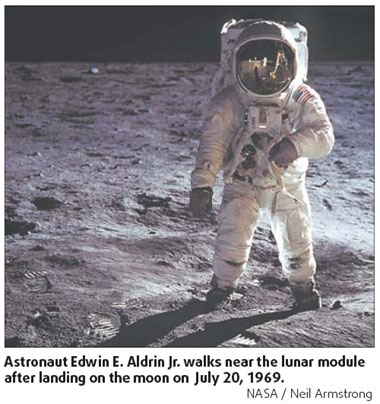
|
CHINA> National
 |
|
Moon talk before China's moon walk
By Wang Qian (China Daily)
Updated: 2009-07-17 07:39 It may be just a moon crater to most, but Chinese sophistication demands at least five different ways of referring to it. And authorities are now looking for the "right term" to claim the Chinese language's stake on at least 18 lunar features, in the latest sign of the country's growing ambition to explore the heavens, and to land on the moon.
 That ambition, plus the interest in naming geological sites on the moon, are coming together as the country sets ambitious goals for space. The Institute of Toponymy, under the Ministry of Civil Affairs, is collecting Chinese translations for the 18 features of the moon to standardize usage and boost the development of moon exploration. "To avoid the inconsistencies of various translated versions of the moon's features, we decided to seek public feedback on naming them," Fan Chenfang, an official of the institute, told China Daily Thursday. Those interested in leaving their mark on the moon can send their ideas to fanchenfang@sina.com, Fan said. The International Astronomical Union first released the names of the 18 lunar features in 1935 and for the past decades, there has been no official standard for their Chinese translations, the ministry said. The 18 terms are the Albedo Feature, catena, crater, dorsum, fossa, lacus, landing site, mare, mons, oceanus, palnus, planitia, promontorium, rima, rupes, satellite feature, sinus and vallis. In the case of the crater, Chinese textbooks have termed it huanxingshan, while zhuangjikeng and yunjikeng have been popular among scholars. Most people simply know it as keng, referring to the Chinese word for "hole".
China marked its foray into space with the launch of its first unmanned spacecraft in November 1999. Four years later, it became the third country, after the United States and Russia, to send a human into orbit, following a two-man mission in 2005. On March 1 this year, Chang'e-I, the country's first lunar probe, hit the moon and ended its 16-month mission. But Chang'e-I, which is named after a legendary Chinese moon goddess, sent the first full map of the moon's surface back to China a month after its launch. The probe's journey was the first phase of the country's three-stage moon mission, whose goal is a landing and launch of a rover vehicle around 2012. "The second phase of the space program aims at a soft landing and the preparation is in progress," said Wu Weiren, chief designer of the country's lunar probe program. In the third phase, another rover is scheduled to land on the moon in 2017 and bring back mineral samples for research. Li Xue, an employee of the China Science and Technology Museum in Beijing, said that, with so many satellites being launched, the latest move for standardized Chinese terms for lunar features should be carried out "as soon as possible". "When our astronauts land on the moon, it will be embarrassing if they do not have any appropriate words to describe what they see to the millions of people watching them on TV," Li said. |